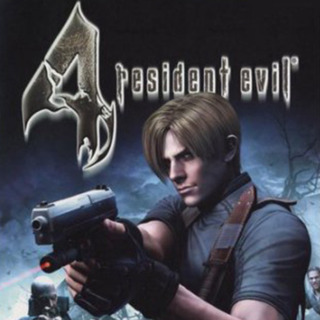Resident Evil 4 represents a brilliant fusion of game mechanics, visuals, and sound design.
Resident Evil 4 might be the first game in the series to have a camera that actually works, but it is even more than that. The camera holds its own against nearly any other implementation. It behaves like a third person shooter, but Capcom avoided the typical distant angle with the centerpiece being either a floating reticule or protagonist's haunch. Instead the camera is usually peaking right over Leon's shoulder for a medium shot. This allows for player identification with Leon (even if he is no more than action hero machismo) and leaves space for the chilling locales in rural Spain. Even better is that there is no big floating reticule to keep your eye on. The HUD is minimal overall which is thanks in no small part to the laser sites mounted on most of the weaponry. This keeps the emphasis on the gameworld and Leon Kennedy. The better viewpoint also has tangible influence on the game due to enemies that react to where they are shot. A headshot obviously does increased damage as well as a stunned status, a shot to the legs can knock enemies over, and a shot to the arm can cause the enemies to drop their weapon. Among other possibilities, projectiles can even be shot down midair.
There are no underutilized gameplay elements. In fact, there are relatively few methods of interaction overall. You break most of the game down to moving, shooting, and a contextual button. What is so brilliant is how each of these elements get their fair treatment and how you can both appreciate their presence and dearly regret their absence. The game encourages you to keep moving due to the large number of foes only to take that precious defense mechanism away in an eerie rattling gondola ride. Shooting is naturally your greatest defense yet even that can be your worst enemy if you do not conserve ammunition. The contextual button prompts can be easy to forget about, but you'll regret it as soon as you do.
There are numerous other individual changes to Resident Evil 4's malleable formula that allow it to easily keep its momentum for a sizable 20 hours. A recurring tweak is the aforementioned president's daughter who comes and goes frequently thanks to a penchant for getting kidnapped that rivals Princess Peach. Ashley fits right in as she hides behind Leon's shoulder much like the player. The amazing thing is that she literally never has any dumb AI moments. She stays ducks to avoid fire and never wanders off. She may even defend herself. Basically, she is a welcome responsibility.
As the game mechanics create tension through a delicate balance of using without overusing resources, the visuals paint a perpetually bleak and grotesque gameworld. The monsters are hideous (I'll add that the challenge never lets down the creature design) and the mutilations are grizzly, but there is more to it than that. For example, their are times when the lighting is central to the game design. The countryside nighttime may conceal immediate threats and then a flash of lightning reveals the danger in the blink of an eye only to disappear just as quickly and leave you even more unsettled by the knowledge that you are in grave danger but without the information to easily defend yourself. Hiding information is good game design here because the concealment is part of the game world rather than obvious developer hands such as the inconvenient camera angles of prior games in the series.
The score adds to the sense of place by implementing different themes for the various locations, but it is also the single greatest tool for giving a sense of pacing. There are 3 basic stages to the action: horror, temperate, and a welcome breather. Misao Senbongi and Shusaku Uchiyama's score succeeds in each phase. Perhaps the most important is the rest music. When it cues, the player knows without fail that they can take a moment to gather themselves. It would have been impossible to make a 20 hour game that keeps the player on edge every second, but the breaks set the player up to be thrown into danger again. The score also knows when it needs to be quiet and let the sound design take over. Some of the most unsettling moments come from farmers mindless stabbing away at a pile of hay. Some of the most horrifying come not from a sudden injury from behind, but an enemy's laugh right before they inflict it.
Resident Evil 4 has so many great moments of gaming purity. Any cinema that doesn't require player action can be skipped so that the rest of the game can sink its hooks into you. It would be one thing have a game with killer mechanics. It would be one thing to have a game where the visuals influence the gameplay in tangible ways. It would be one thing have a game where the sound design is so closely woven in the rest. Resident Evil 4 is the rare example where all 3 come together. That is reason enough for its classic status.

